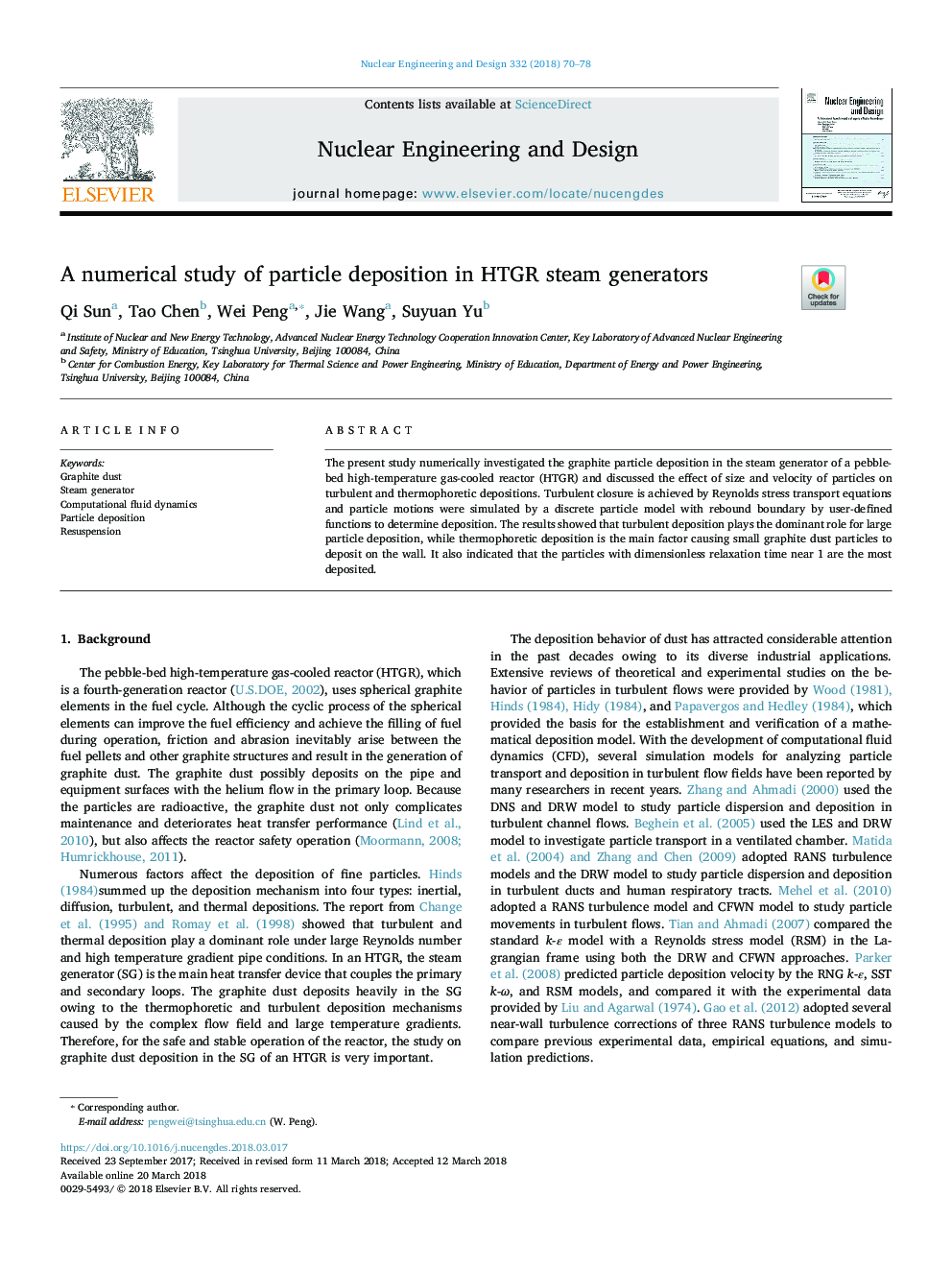| Article ID | Journal | Published Year | Pages | File Type |
|---|---|---|---|---|
| 6758867 | Nuclear Engineering and Design | 2018 | 9 Pages |
Abstract
The present study numerically investigated the graphite particle deposition in the steam generator of a pebble-bed high-temperature gas-cooled reactor (HTGR) and discussed the effect of size and velocity of particles on turbulent and thermophoretic depositions. Turbulent closure is achieved by Reynolds stress transport equations and particle motions were simulated by a discrete particle model with rebound boundary by user-defined functions to determine deposition. The results showed that turbulent deposition plays the dominant role for large particle deposition, while thermophoretic deposition is the main factor causing small graphite dust particles to deposit on the wall. It also indicated that the particles with dimensionless relaxation time near 1 are the most deposited.
Related Topics
Physical Sciences and Engineering
Energy
Energy Engineering and Power Technology
Authors
Qi Sun, Tao Chen, Wei Peng, Jie Wang, Suyuan Yu,
